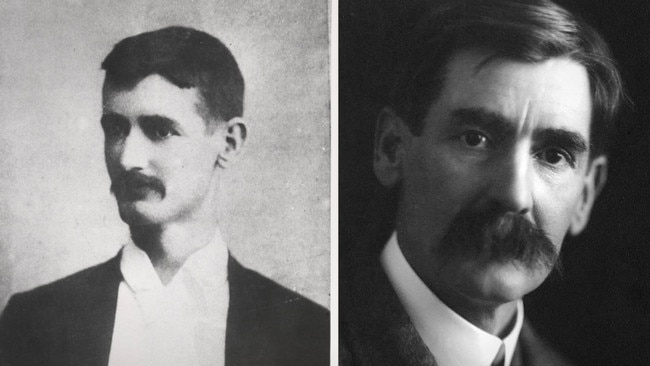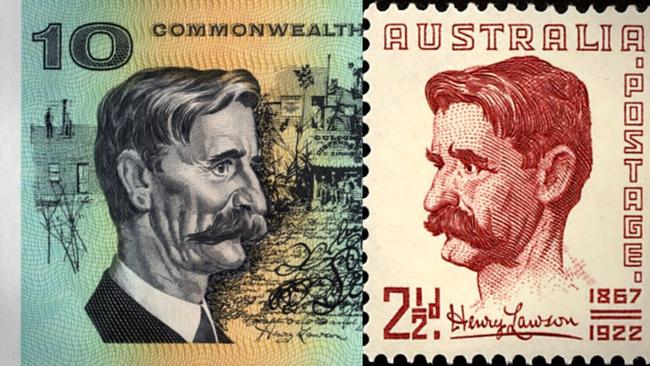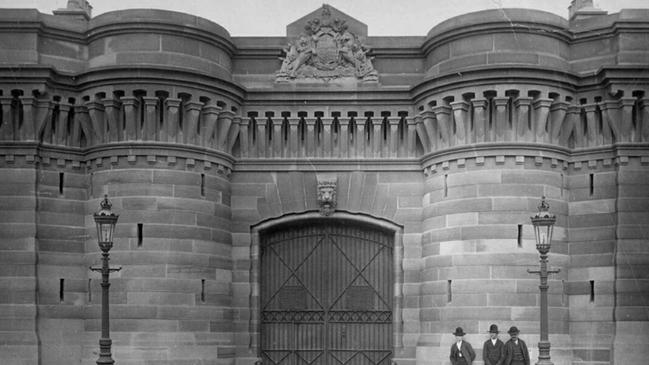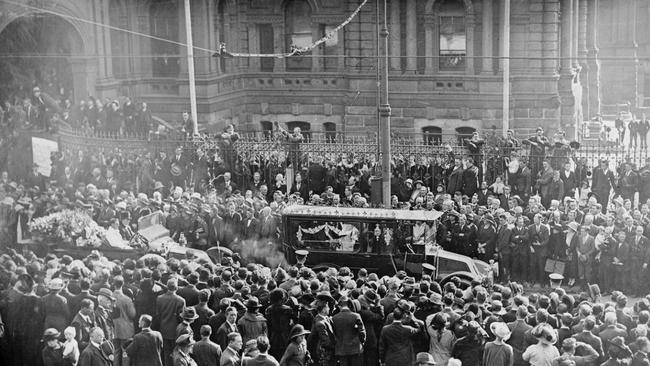Henry Lawson produced some of Australia’s best literary works but his personal life was marred by unhappiness and conflict
Henry Lawson was one of Australia’s finest writers, but despite his immense talent he was plagued by alcoholism and stints in prison.

Victoria
Don't miss out on the headlines from Victoria. Followed categories will be added to My News.
He was one of Australia’s finest ever writers, widely celebrated for his poetry and prose, and even featured on the first $10 note.
But Henry Lawson, who wrote such pieces as Faces in the Street and The Drover’s Wife, had a dark shadow that followed his path to fame.
Plagued by a prolonged drinking problem, unexpected poverty and accusations of domestic abuse, Lawson served several stints in prison as his creative genius produced some of the country’s best literary work.

Early talent
Since he began jotting down poetry as a teenager, Henry Lawson’s immense talent was evident.
Born on the NSW goldfields in 1867, in a tent at midnight during a severe storm according to one account, Lawson had a Norwegian father and an Australian mother.
His first published poem, at the age of 20, was accompanied by a gushing editor’s note, saying that such eloquent genius had been constructed by a youth who “has as yet had an imperfect education and is earning his living under some difficulties as a housepainter.”
Around the same time his deafness was treated in Melbourne by a specialist, but little could be done to remedy it.

Nonetheless, Lawson grew to become a giant of the early Australian literary scene.
His simple, direct language and masterful descriptions earned him a legion of passionate fans.
In an itinerant career that took him across Victoria, Queensland and New South Wales, he penned enduring Australian favourites such as poems Andy’s Gone with Cattle and The Teams, and short stories The Bush Undertaker and The Union Buries its Dead.
But Lawson’s personal life was marred by unhappiness and conflict.
After a brief engagement to fellow poet and writer Mary Gilmore, Lawson married Bertha Bredt Jr in 1896 – a marriage that would effectively end just seven years later.

In an affidavit that accompanied her filing for divorce, she said of Lawson:
“My husband has, during three years and upwards, been a habitual drunkard and habitually been guilty of cruelty towards me.
“My affidavit consists of the acts and matters following. That my husband during the last three years struck me in the face and about the body and blacked my eye and hit me with a bottle and attempted to stab me and pulled me out of bed when I was ill and purposely made a noise in my room when I was ill and pulled my hair and repeatedly used abusive and insulting language to me and was guilty of … other acts of cruelty to me whereby my health and safety are endangered.”
The couple were granted separation in 1903, after which Lawson spiralled into alcoholism and hard times.
He took up residence above a coffee palace in Sydney and had good relations with his landlady but the law came after him for non-payment of child support and his worsening public drunkenness.
Between 1905 and 1909 he served seven stints in prison, totalling more than five months.
Still, Lawson used his grim experiences to fuel his work.
The poem One Hundred and Three described life in prison, and took its title from his inmate number at Darlinghurst Prison in NSW.

Tragic decline
In the final two decades of Lawson’s life, he was a shadow of his former self.
His landlady Isabel Byers acted as family, dealing with his dwindling publishers and supporting him enough to keep producing work.
Lawson died in 1922 of a severe stroke at the age of just 55.
A week before his death, perhaps knowing he was nearing the end, Lawson indicated he wanted to be buried in the grave that had formerly contained the remains of another Australian poet, Henry Kendall.
Despite his loneliness in later life, Lawson’s funeral was a huge affair that attracted thousands of mourners, including prime minister Billy Hughes.

Long before the funeral was even under way, countless members of the public filed past Lawson’s remains at the funeral parlour and at St Andrew’s Cathedral in Sydney.
But newspapers noted that, despite his genius, Lawson had produced little work of great merit in the past 20 years of his life, and that the period between 1890 and 1900 had been his golden years.
Lawson was buried in Kendall’s former grave at Waverley Cemetery in Sydney but memorials sprung up around the country.
A statue of Lawson erected in Melbourne’s Footscray Park in 1960 became a gathering point for Lawson enthusiasts who continue to meet in 2022 to read Lawson stories and poetry.
More Coverage
Originally published as Henry Lawson produced some of Australia’s best literary works but his personal life was marred by unhappiness and conflict




